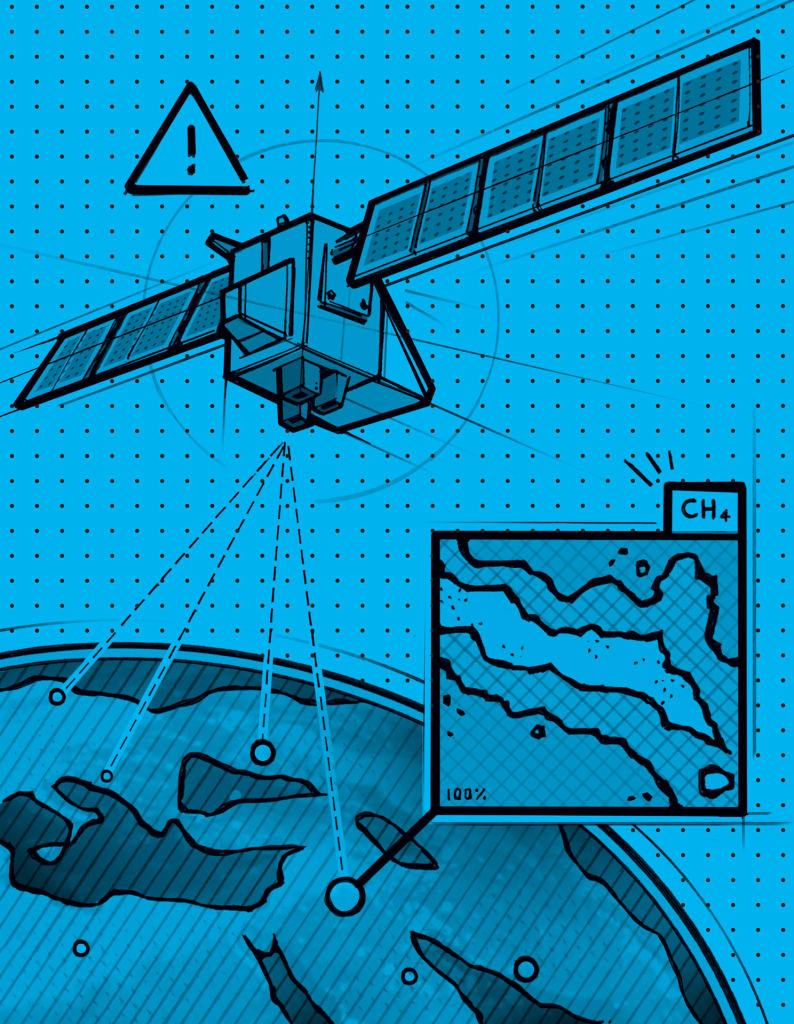As the use of artificial intelligence grows, there’s a risk that it could boost emissions as it drives up demand for energy at data centers. But AI also has the potential to help find new ways to shrink humanity’s giant carbon footprint. At Google, research teams are working on more than 20 AI tools to fight climate change and deal with impacts like flooding and wildfires.
“We all know that we need climate breakthroughs, and we need them quickly. We also know that we’re seeing an extraordinarily fast pace of innovation in the field of AI,” says Juliet Rothenberg, the product lead for Google’s climate AI work. “What’s so exciting about our work in climate AI is that we’re bringing the pace of AI innovation to tackle the climate challenge, and we’re seeing very meaningful results very quickly.” Google recently partnered with Boston Consulting Group on an analysis that suggested AI could help eliminate as much as 10% of emissions by 2030.

While AI can be used in a multitude of ways, the company looks for areas that could have a particularly large climate impact and where Google “has a special sauce to bring to the space,” Rothenberg says.
For its work on climate AI, Google is Fast Company’s World Changing Company of the Year. Here are a few of the company’s tools that are already in use.
Every time drivers stop at a red light and then accelerate when the light changes, it adds to emissions and pollution: Busy urban intersections can be 29 times more polluted than nearby streets. But in more than a dozen cities, from Seattle to Jakarta, traffic engineers are now using an AI tool from Google to help traffic flow more smoothly and cut down on exhaust.
The tool, called Green Light, analyzes driving data from Google Maps and then suggests changes, such as keeping a signal green for a couple of extra seconds at a certain time of day. Traffic data would otherwise be difficult and expensive for cities to access, and less detailed.
“We develop recommendations that city traffic engineers can implement in a matter of minutes compared to what would previously take them weeks of analysis per intersection to optimize,” says Rothenberg. “We’re seeing reductions in stops for stop-and-go traffic of up to 30%, and reductions in emissions of up to 10% at intersections where we’re operating.” (While the project is focused on drivers, the team doesn’t offer recommendations that might hurt pedestrians or public transportation.)

In March, a new satellite launched into space to look for methane—a potent greenhouse gas that has 80 times the warming power of CO2. Oil and gas sites are a major source of leaks. The project, called MethaneSAT, spun out of the nonprofit Environmental Defense Fund. Google partnered on the project and is using AI to help map oil and gas facilities around the world so the pollution detected by the satellite can be linked to its source.
CONTRAILS
In another project, Google researchers used AI to help reduce one of aviation’s lesser-known climate challenges—the contrails that form behind planes, which make up more than a third of aviation’s global warming footprint. In a test with American Airlines over six months, Google’s AI suggested slightly tweaked flight paths, helping to reduce contrails by as much as 54%.
Most other climate solutions in aviation “are very expensive and very long-term,” Rothenberg says. “Contrails are responsible for 35% of aviation’s warming impact, and we can avoid them via very low-cost altitude changes—and do that at scale.”
Tapestry, a project housed at X, Google’s “moonshot factory,” makes AI-powered tools that can simulate changes in the electric grid to help grid operators move to a 100% renewable future. In Chile, for example, where the country aims to run on 100% renewables by 2030, the grid operator is now using the simulation tool to plan how the grid will work without coal power. They’re “able to run 12 times the number of future scenarios as they were previously,” Rothenberg says. “So we’re able to really accelerate the way that grids can understand renewables and move forward.”
Until recently, it was nearly impossible to predict when a river would flood. But Google uses artificial intelligence to analyze satellite images, build virtual models of land, and combine that data with weather forecasts to create accurate predictions. In a recent paper in Nature, the team explained that the system makes it possible to predict flooding as much as seven days in advance, so communities can evacuate if needed. The tool is now in use in 80 countries. As climate change makes extreme flooding more common, communities are likely to use it even more often.
As Google uses AI in multiple other climate-related projects—from tracking wildfires to optimizing directions on Google Maps so drivers use less fuel—Rothenberg says the company is also working to make sure that AI doesn’t cause emissions to grow. Google is committed to 24/7 carbon-free energy by 2030, meaning that its AI tools will use data centers on grids that rely on clean power.
And, she points out, the scale of potential climate benefits from AI is huge. “Contrail warming is more than three times the warming of all the world’s data center use combined,” she says. “That’s one use case for climate AI. I think it’s really important to look at the math as we think about these problems and look at the opportunities that we have in this space.”
Explore the full list of Fast Company’s World Changing Ideas, 281 projects that are making the world more accessible, equitable, and sustainable for everyone. We’ve selected the companies, organizations, and nonprofits making the biggest impact across 50 categories, including architecture, energy, finance, transportation, and more.
Recognize your brand’s excellence by applying to this year’s Brands That Matter Awards before the final deadline, June 7.

